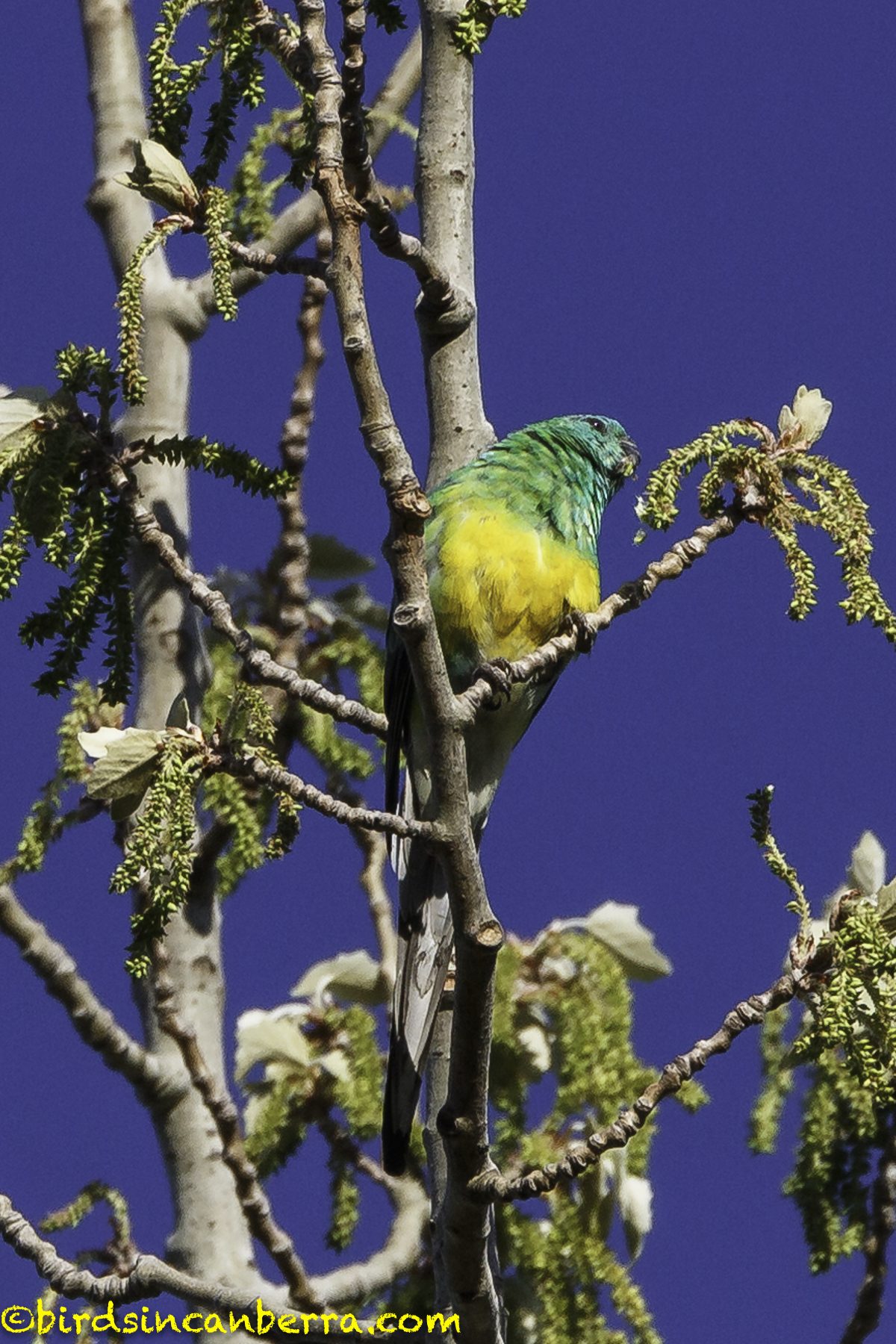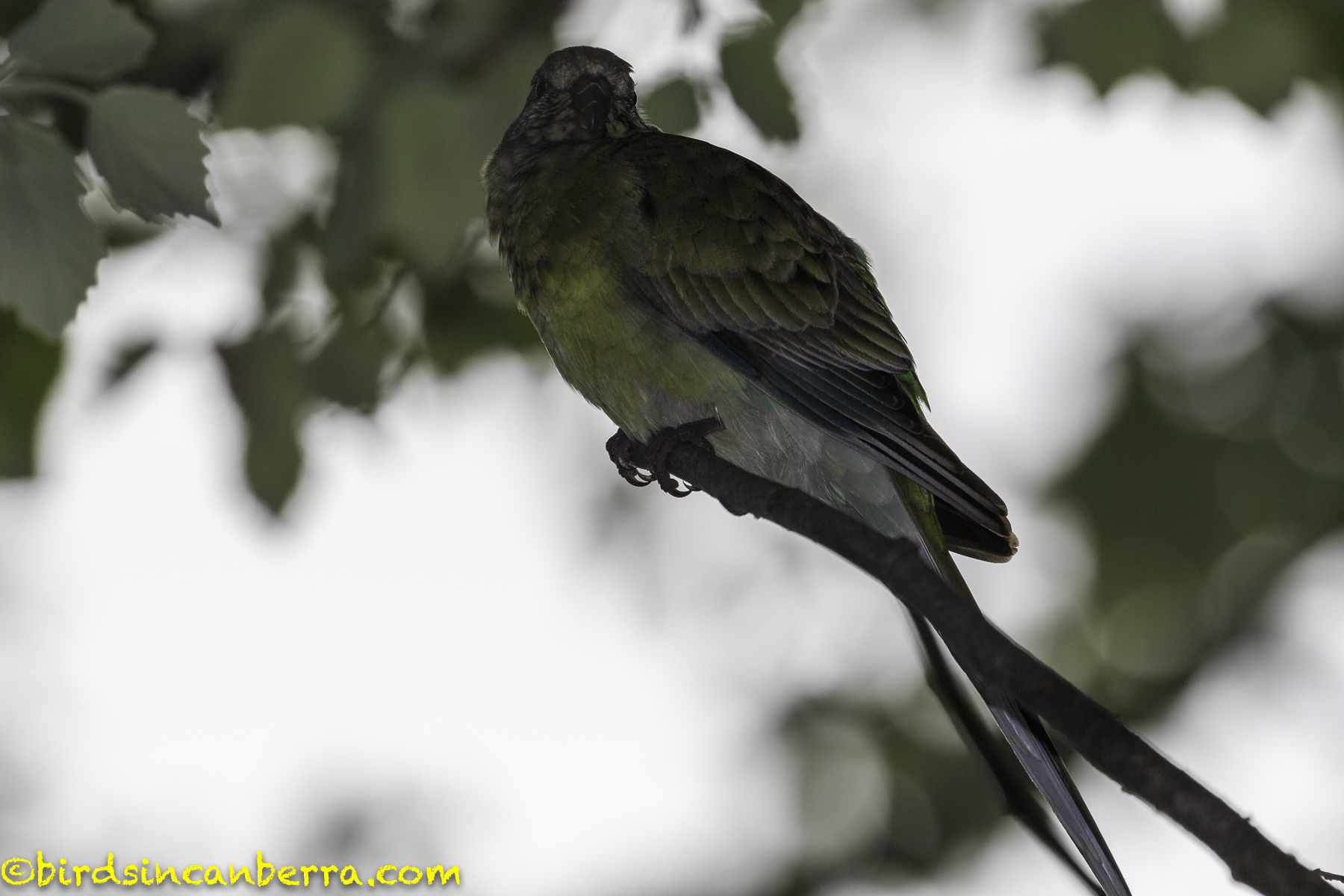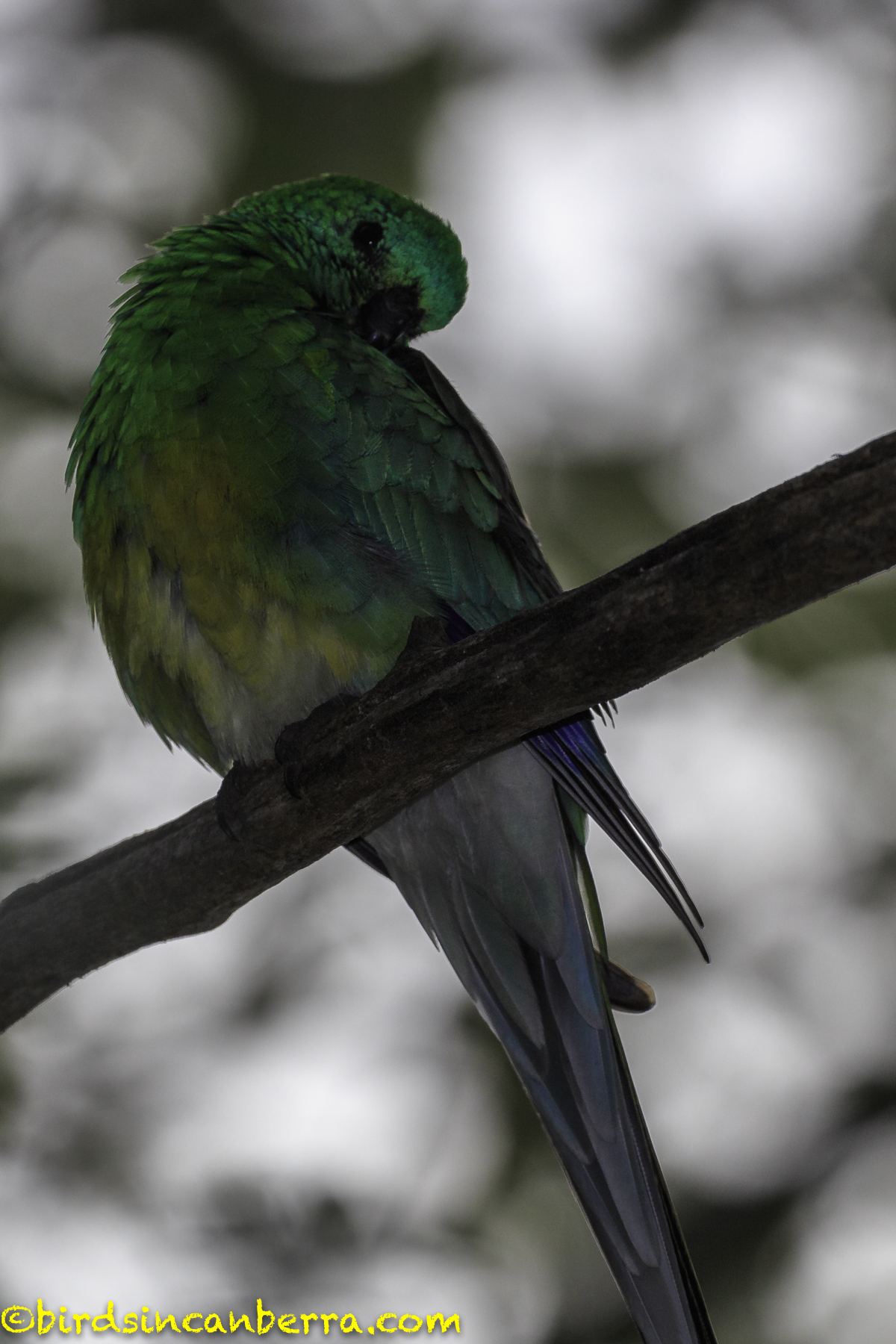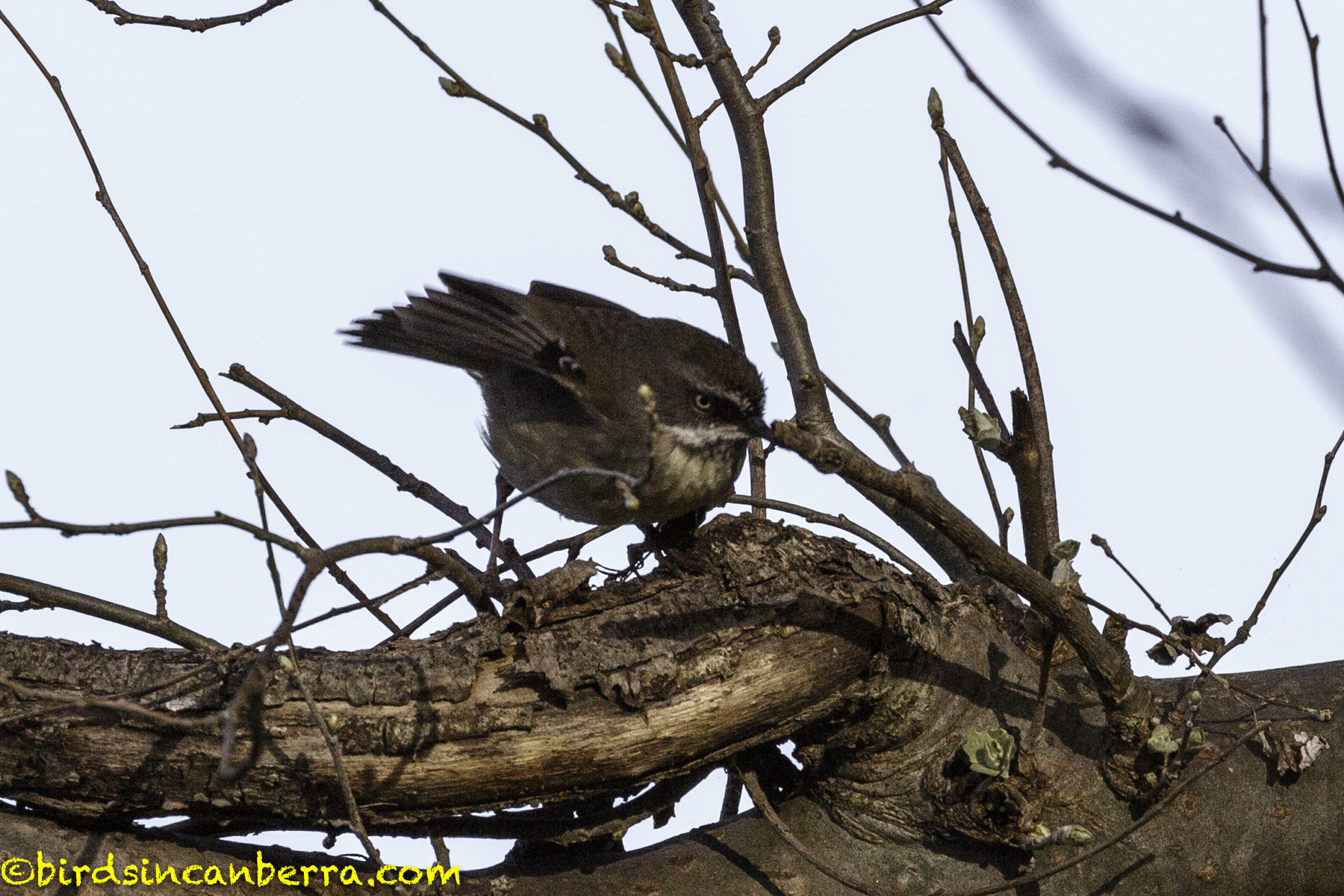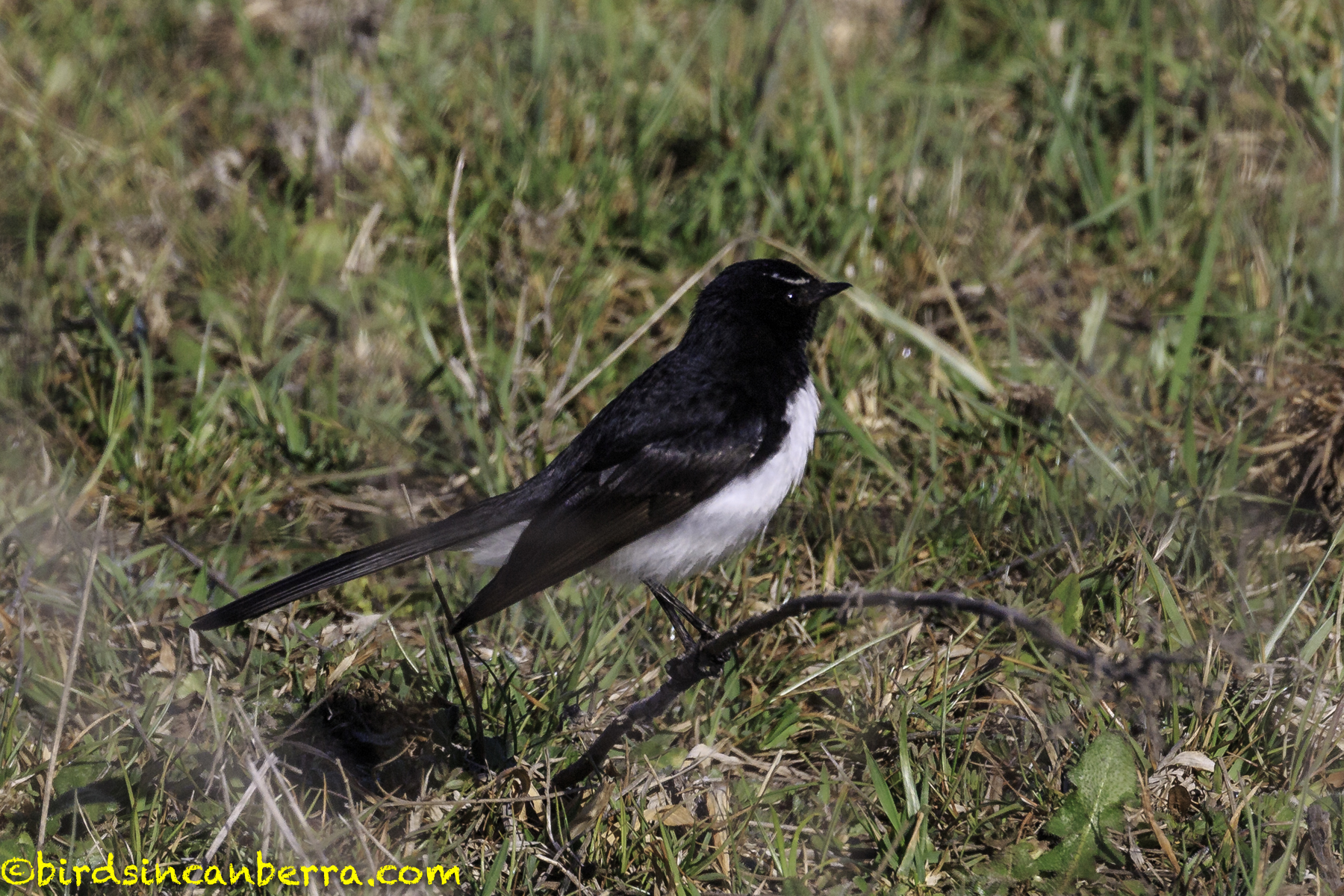I always enjoy going to Jerrabomberra Wetlands, which are a placid, well maintained retreat just on the edge of Canberra’s most “industrialised” suburb of Fyshwick. There are walking tracks connecting a series of hides so it really is a bird photographer’s dream. This time I tried a different part of the wetlands by heading north towards where some training trenches had been during the First World War. I was the only person in this part of what can be a popular location as it is on the bike path around Lake Burley Griffin. I was so glad I went as very soon after starting my walk I saw a male Superb Fairy-wren in his blue breeding plumage. I then saw several more while I was walking. It was nice seeing a different part of the wetlands and I plan to return again to this spot to further explore this quiet location.
As I said, I saw a number of male Superb Fairy-wrens, as well females, with the males resplendent in their blue plumage marking them as breeders. They were normally in pairs, predominantly in the shrubbery lining the cycle path. They were making their short, sharp, rasping-like calls, very rarely staying still in one place. The males would often go to the highest point of the shrubbery they were in to make their calls. The females stayed lower down in the shrubs. These birds are unrelated to the English wren but are part of a group of birds given this name soon after the first English arrived in Australia, as these birds reminded people of wrens back in England. The term Fairy-wren as a name is less than a 100 years old despite how well known these birds were to people since the first days of the colony. It was only in the 1970s when the name became widespread. The term ‘superb’ was an early descriptor although ‘Blue Wren’ was also popular with an effort being made to call it by its colour rather than an apparently hyperbolic name that could not distinguish it from other similar birds. (The naming discussion is from this book.)
I saw a group of Silvereyes fly across Dairy Farmers Road into some trees where the fairy-wrens were, on the west side of the road. I could only photograph one of the group as these birds rarely stayed still for long.
While walking towards the start of the trench path I heard some calls from high up in the trees, looking up I saw a pair of Red-rumped Parrots feeding in the tops of the trees. The first two photos show the male (highest bird in the first photograph) and female together with the male launching in the second photo as he heads to a different branch. Photos three and four show just the male eating on the second branch. The final two photographs show the female, bottom left, then the male, bottom right, when I saw them in the low canopy of the small trees near the river. Because it was dark I had to use a flash to photograph them. The flash really set the male’s plumage off, which is how it appears when the sun hits it just right, bringing out the iridescent greens in the feathers. It can be mesmerising seeing such sheen on a small parrot.
As at Red Hill, I initially saw three birds flying between some trees and open areas, then one of the birds left. The birds were not concerned with my presence and I was able to identify them as Grey Fantails.
I saw a number of White-browed Scrubwrens while I was out walking. These are tiny birds who are at home going through dense undergrowth and leaf litter. They are often right down low on the ground crawling through tangled growth such that they would surely be challenged to fly off if attacked by a predator.
I am unsure if this is the same Willie Wagtail in all the photographs below. I initially saw one in a tree, as seen in the first three photographs, then walking on further there was one in an open field, not far from the tree. The bird in the tree was jumping between branches, not staying still at all. Although not clear in the photographs, the birds were generally facing northwards, roughly in the direction of the rising sun perhaps at this time of year.
I heard this sole Crimson Rosella first, with its single note, high pitched short reverberation. Once I heard it, I was able to easily locate its wonderful red plumage in the tree it was perched in.
Flying through the shrubs I initially saw the fairy-wens in were a small group of European Goldfinches. They generally stayed on top of the shrubs but would go through the leaves of small tress onto the interior branches.
Since I was at the wetlands, and I still had a bit of time before I really needed to head home I thought I would see what birds I could photograph from the hide closest to the carpark. There were at least ten Grey Teals in the water immediately in front of the hide. They were not particularly active, with many staying still or preening. The occasional one would dive underwater, although that seemed more like they were cleaning their feathers rather than feeding, as they would stay in a small spot and immediately after surfacing they would ruffle all their feathers. There also seemed to be some aggression as I saw two instances where one teal forced another teal to move. In the first two photographs two teals swam in a wide curve with the front teal occasionally “running across the water” to get away from the teal behind. In the third photograph, the left teal had forced the middle teal along that log until it came up against the right teal, who was not going to yield its position, hence why the middle teal looks like it is about to jump onto the grebe to escape the other two birds. The final photo shows one of the teals that had just dived and was then flapping its wings.
The breeding plumage of the Australasian Grebe may not be excessive but it marks a discrete colourful change from how they were a few months ago. The male and female both have the same breeding plumage so I cannot say what sex this bird is, and I only saw this one. These birds have a lobe on their hind toe which experiments have shown readily aid their swimming ability.
When I was entering the hide there was an Australian Raven walking along the entrance path. I wanted to photograph it but the path was well shaded meaning a black bird in shadow is not an easy thing to photograph so I let the opportunity go. Possibly the same bird later appeared in front of the hide but walking through thick grass making it hard to photograph. The raven walked the ten metres or so to the water in front of the hide. None of the other birds reacted to the raven’s presence, as I was wondering if it was trying to find unattended eggs in nests along the bank. Looking at the slight dampness on its beak I suspect it was just getting a drink. As it was walking back I thought I would do a head study since its body was hidden by the grass stalks. I am really happy with the results. I really like the gleam on the plumage. An interesting note for me is at a distance the eye appears more white.













